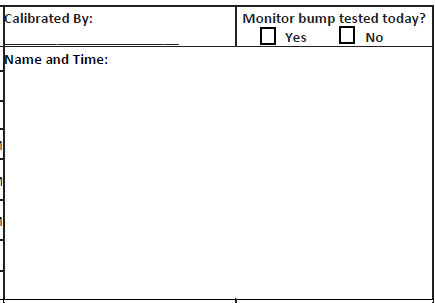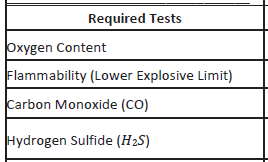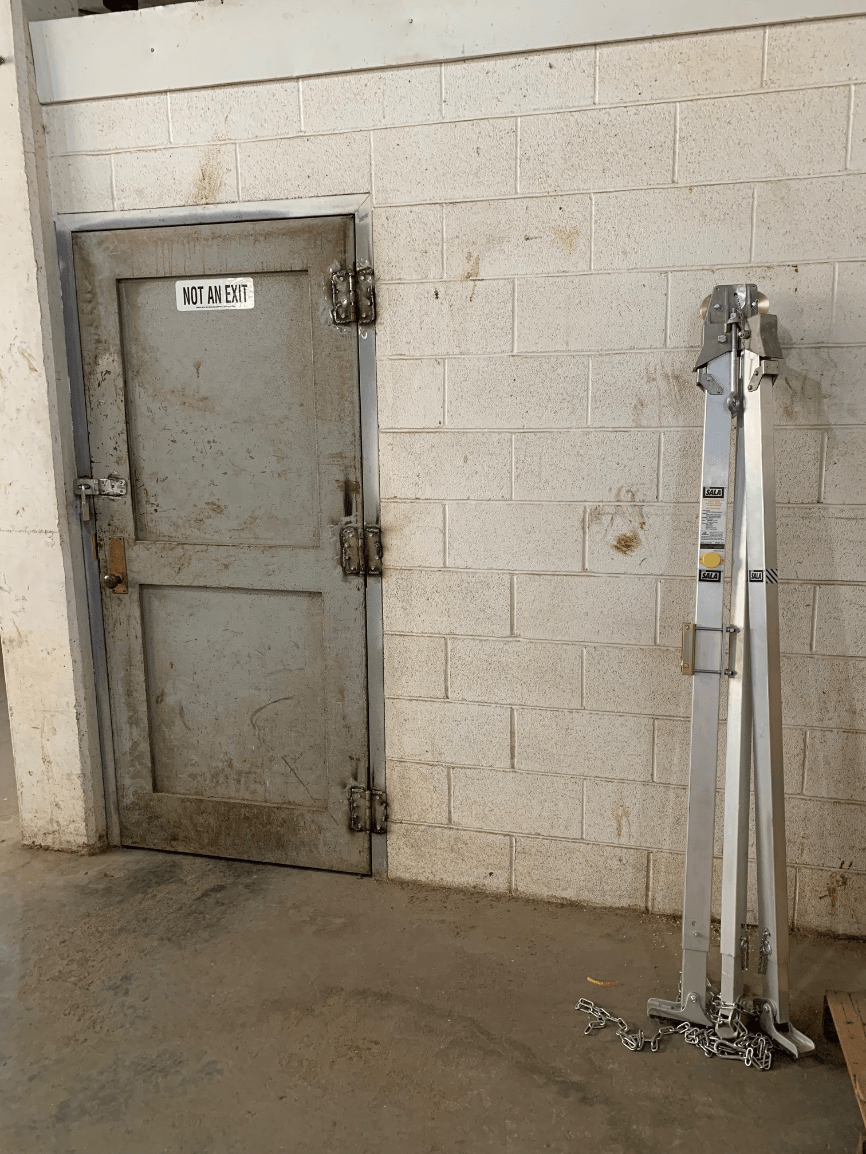The frequency required for bump testing of air monitors

What is daily or prior to the first use of the day
To participate in an confined space entry, an Operator must have completed confined space training within this maximum interval of time prior to the entry date.
What is within the past 12 months; confined space training is required annually

The measure of elapsed time that necessitates taking an additional set of atmospheric readings
What is thirty minutes

This department needs to be called prior to entry and after all personnel have exited the confined space
What is the Lafayette Fire Department
The location on the air monitor where the most recent calibration date is recorded
What is on the underside of the metal clip
The team member responsible for reviewing the permit and signing off on its completion at the close of a confined space entry
Who is the Entry Supervisor

The threshold level for the high temperature extreme triggering additional actions during a confined space entry
What is 104oF (40o C)

The Lafayette Fire Department serves as which member of the site Confined Space Team?
What is the Confined Space Rescue Team
The four standard gases for which monitoring is performed during confined space entries
What are Oxygen (O2) Content, Flammability / Lower Explosive Limit (LEL), Carbon Monoxide (CO2), and Hydrogen Sulfide (H2S)

This is the required frequency, per OSHA, for reviewing the site's Confined Space Permits
What is annually

This must be designated and verified with the Standby Attendant prior to entering a confined space.
What is the communication method

The Entry Attendant may only enter the space in the case of an emergency, TRUE or FALSE
What is FALSE; the only exception is if the Entry Attendant duties have been transferred to another Operator prior to the Entry Attendant shifting roles to an Entrant
Cargill's minimum and maximum limits for atmospheric oxygen (O2) content during a confined space entry
What is the range of 20% - 22%

Three required areas for an Entry Supervisor to review and sign on a Confined Space Permit
Where are:
Training verification

Pre-entry task verification

Job Completion Check / Final Review signoff

Three primary responsibilities of an Entry Attendant during a confined space entry
Ensuring all Authorized Entrants have received confined space training within the specified interval
Controlling access to the space; limiting to Authorized Entrants only
Keeping in contact with Entrants
Recording initial atmosphere readings and additional readings every thirty minutes
Documenting Attendants and Entrants and times on the Authorized Attendant and Entrant Log
Recording the date and time when all entrants have exited the space at the completion of the entry
In the event of an emergency during a Confined Space entry, whose primary responsibility is it to call emergency services?
Who is the Standby Attendant
The required calibration frequency for Draeger air monitors

What is every six months
Six required areas for an Authorized Attendant to review and sign on a Confined Space Permit
Where are:
Pre-entry atmosphere readings

Training verification

Communication methods / verification

Pre-entry task verification

Continuous Atmosphere Testing log, if entry lasts longer than 30 minutes

Authorized Attendant and Entrant Log

This Attendant is not required to be present at the site during a Confined Space Entry
What is the Standby Attendant
The plant location where the emergency tripod / winch is stored

Where is the top floor of the Warehouse
